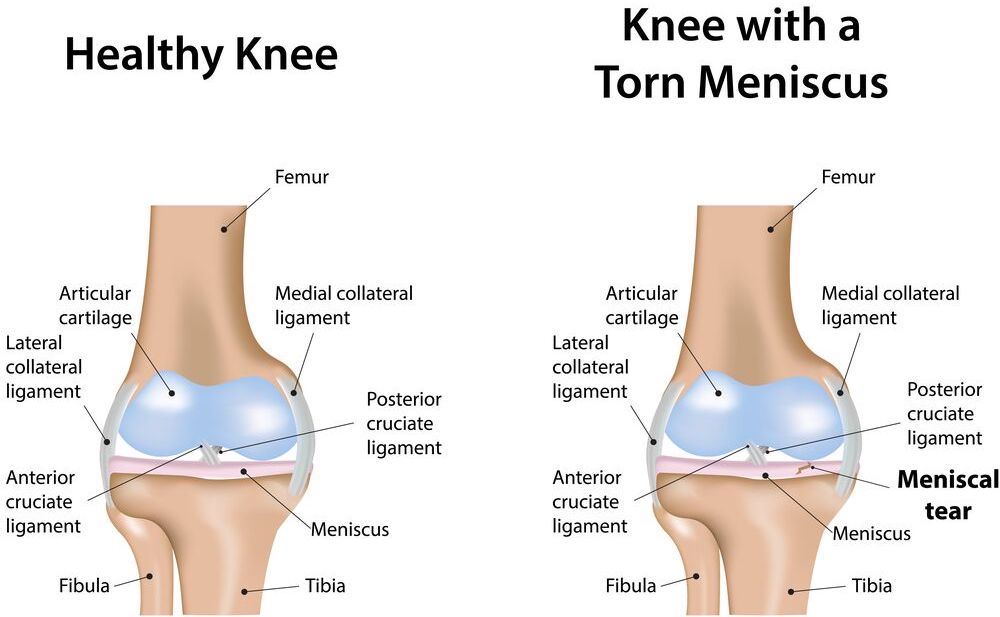What is a meniscus tear?
Injuries to the meniscus cartilage of the knee are among the most common injuries encountered in sports. Many athletes, especially runners and those in contact sports, are highly susceptible to tears. However, individuals at any age can experience tearing of the meniscus. Tears can be acute and traumatic, involving injury, or chronic and degenerative in nature. When the meniscus is degenerated over time, everyday activities such as slight pivoting or squatting can cause a tear. Dr. Austin Chen, orthopedic knee and sports medicine specialist in the Boulder Colorado area specializes in treating meniscus tears.
There are three bones that form your knee joint the thigh bone (femur), the shinbone (tibia) and the kneecap (patella). Within in joint of the knee, there are two piece of cartilage between the thigh bone and shin bone. These pieces of cartilage is called the meniscus. The role of the meniscus is to provide cushion, act as a shock absorber and prevent extreme pivoting of the knee.
The outside one third of the meniscus has a rich blood supply, which is called the “red” zone, and the inner two thirds lacks a blood supply, which is called the “white” zone. The red zone may heal on its own, while a tear in the white zone may require surgery or other forms of treatment since the pieces cannot grow back together.

Types of meniscus tears and treatments:
- If you have a small tear at the outer edge of the meniscus (in what doctors call the red zone), non surgical options are offered. These tears often heal with rest.
- If you have a moderate to large tear at the outer edge of the meniscus (red zone), you may want to think about surgery. These kinds of tears tend to heal well after surgery.
- If you have a tear that spreads from the red zone into the inner two-thirds of the meniscus (called the white zone), your decision is harder. Surgery to repair these kinds of tears may not work.
- If you have a tear in the white zone of the meniscus, repair surgery usually isn’t done, because the meniscus may not heal. But partial meniscectomy may be done if torn pieces of meniscus are causing pain and swelling.
What are the symptoms of a meniscus tear?
Symptoms of a meniscus tear are highly variable, but the most common symptoms are pain, stiffness, and swelling. People with a meniscus tear may report hearing a “pop” along with a feeling of instability or that the knee is going to “give way.” Some patients may feel a catch or locking sensation in the knee and find that it will not freely move with full range of motion. For many people, you can still walk with a meniscus tear, but over a few days, the knee will gradually stiffen and become more swollen than when suffering the initial tear. Some people find that they can still do the activities they like to do with a minor meniscus injury but they may have a persistent pain, swelling, or feeling of instability.
What is the treatment for a meniscus tear?
The treatment of a meniscus tear depends on the severity. In cases where the tear is minor and the symptoms not too disruptive, non-surgical measures such as icing, rest and physical therapy are recommended. For larger tears, and tears that do not respond to the conservative treatments, Dr. Chen may recommend an outpatient arthroscopic surgery called a meniscectomy.
